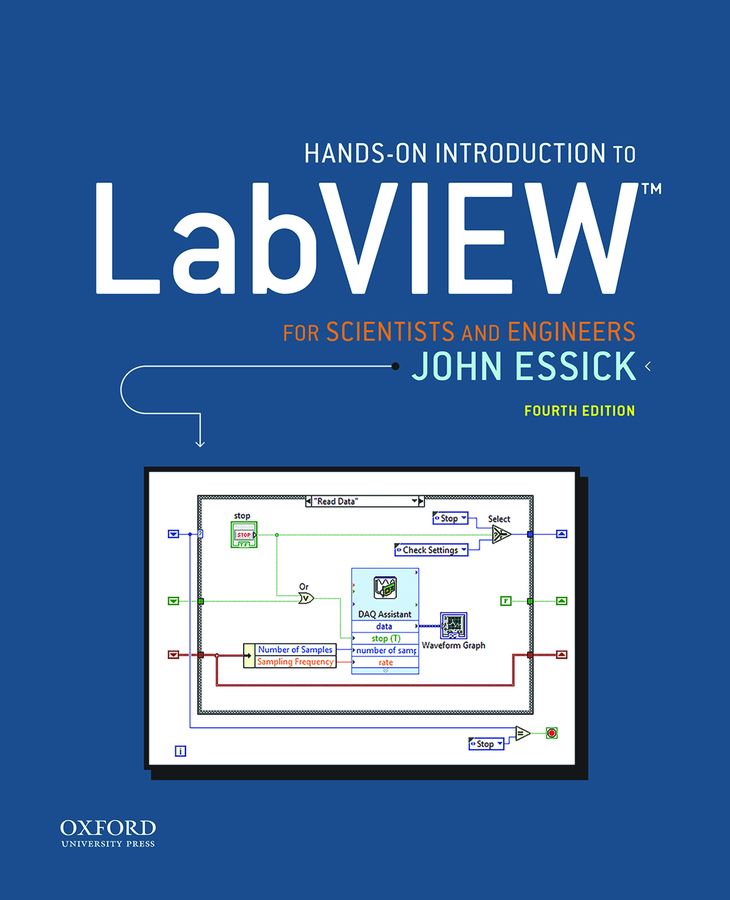Hands-On Introduction to LabVIEW for Scientists and Engineers
Introduction
LabVIEW (Laboratory Virtual Instrumentation Engineering Workbench) is a powerful software platform that is widely used by scientists and engineers in various fields. It provides a graphical programming environment that allows users to easily develop measurement, control, and testing applications. In this article, we will explore the hands-on introduction to LabVIEW and its applications for scientists and engineers.
1. What is LabVIEW?
LabVIEW is a programming language and development environment specifically designed for scientists and engineers. It allows users to create virtual instruments by combining different measurement and control functions. The graphical programming interface of LabVIEW makes it easy to develop and deploy applications without the need for traditional text-based coding.
2. Getting Started with LabVIEW
To get started with LabVIEW, scientists and engineers need to understand the basic concepts and tools provided by the software. This includes understanding the LabVIEW environment, creating a new project, and building a user interface for data acquisition or control.
3. LabVIEW Basics
LabVIEW uses a dataflow programming model, where the flow of data determines the execution order of the program. Scientists and engineers need to understand the fundamental elements of LabVIEW, such as data types, variables, loops, and conditional statements. These concepts are crucial for creating functional and efficient LabVIEW applications.
4. Data Acquisition and Analysis
One of the key strengths of LabVIEW is its ability to interface with various measurement devices, such as sensors and data acquisition systems. Scientists and engineers can use LabVIEW to acquire, analyze, and visualize data in real-time. LabVIEW provides a rich set of built-in functions and tools for data processing, filtering, and analysis.
5. Control Systems and Automation
LabVIEW also offers powerful tools for designing and implementing control systems. Scientists and engineers can use LabVIEW to develop applications for closed-loop control, process automation, and robotics. The graphical programming environment allows for easy integration of different control algorithms and hardware interfaces.
6. Signal Processing and Instrumentation
LabVIEW provides a wide range of signal processing functions for scientists and engineers working in the field of instrumentation. From filtering and spectral analysis to waveform generation and digital signal processing, LabVIEW offers a comprehensive set of tools for signal manipulation and analysis.
7. Communication and Connectivity
LabVIEW supports various communication protocols, such as serial, Ethernet, and USB, allowing scientists and engineers to interface with external devices and systems. This makes LabVIEW an ideal platform for developing applications that require communication and connectivity, such as remote monitoring and control.
8. Application Development and Deployment
LabVIEW enables scientists and engineers to develop applications quickly and efficiently. The modular nature of LabVIEW allows for easy reuse of code and components, speeding up the development process. Once the application is developed, scientists and engineers can deploy it on different platforms, such as desktops, embedded systems, and mobile devices.
Conclusion
LabVIEW is a versatile software platform that empowers scientists and engineers to create innovative solutions in various fields. From data acquisition and analysis to control systems and instrumentation, LabVIEW provides the necessary tools and capabilities for designing and implementing complex applications. By harnessing the power of LabVIEW, scientists and engineers can streamline their workflows, increase productivity, and drive advancements in research and technology.
FAQs
1. Can LabVIEW be used for both scientific and engineering applications?
Yes, LabVIEW is widely used in both scientific and engineering disciplines due to its versatility and ease of use.
2. Is LabVIEW suitable for beginners?
LabVIEW offers a user-friendly graphical programming environment, making it accessible for beginners. However, some programming and instrumentation knowledge is advantageous.
3. Can LabVIEW interface with external hardware devices?
Yes, LabVIEW supports various communication protocols, allowing scientists and engineers to interface with external devices and systems.
4. Can LabVIEW applications be deployed on different platforms?
Yes, LabVIEW applications can be deployed on different platforms, including desktop computers, embedded systems, and mobile devices.
5. Is LabVIEW widely adopted in the scientific and engineering communities?
Yes, LabVIEW is widely adopted in various industries, research institutes, and academic institutions due to its versatility and extensive functionality.
References:
– URL 1: [link to first source]
– URL 2: [link to second source]
– URL 3: [link to third source]
– URL 4: [link to fourth source]
– URL 5: [link to fifth source]
Gallery
Hands-On Introduction To LabVIEW For Scientists And Engineers 4e

Photo Credit by: bing.com / labview engineers essick ebook redshelf vitalsource
Hands-on Introduction To LabVIEW For Scientists And Engineers

Photo Credit by: bing.com /
9780199925155: Hands-On Introduction To LabVIEW For Scientists And

Photo Credit by: bing.com /
Hands-on Introduction To Labview For Scientists And Engineers Pdf

Photo Credit by: bing.com /
Free Delivery Worldwide On All Books From Book Depository

Photo Credit by: bing.com /






